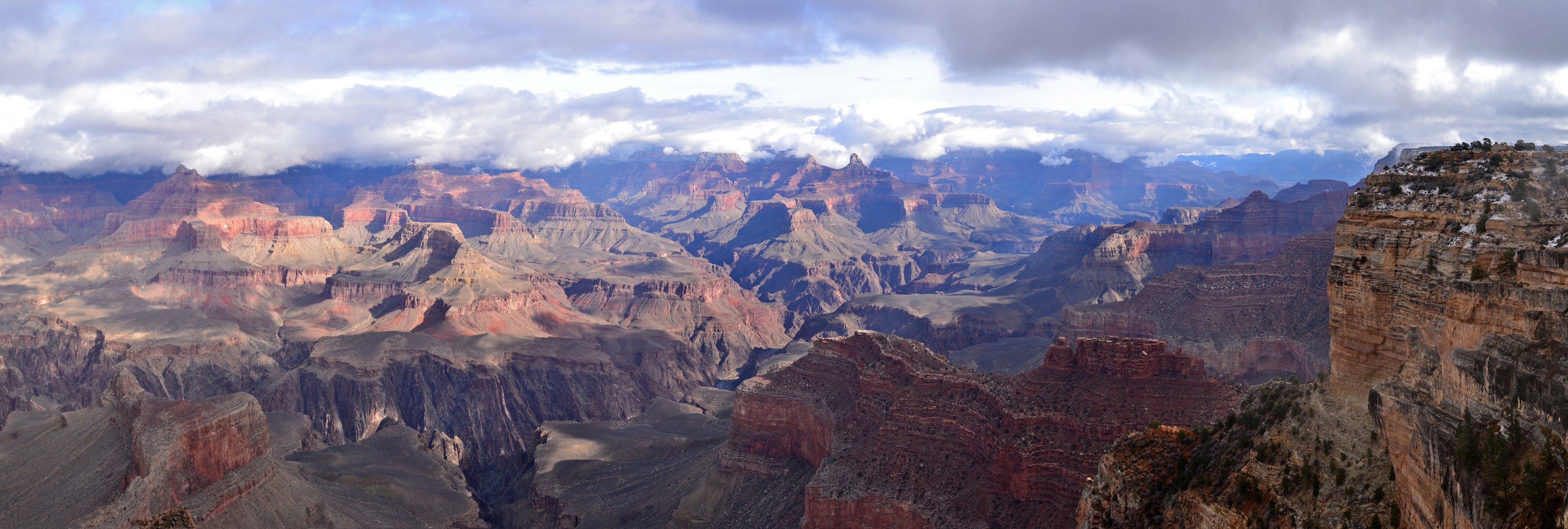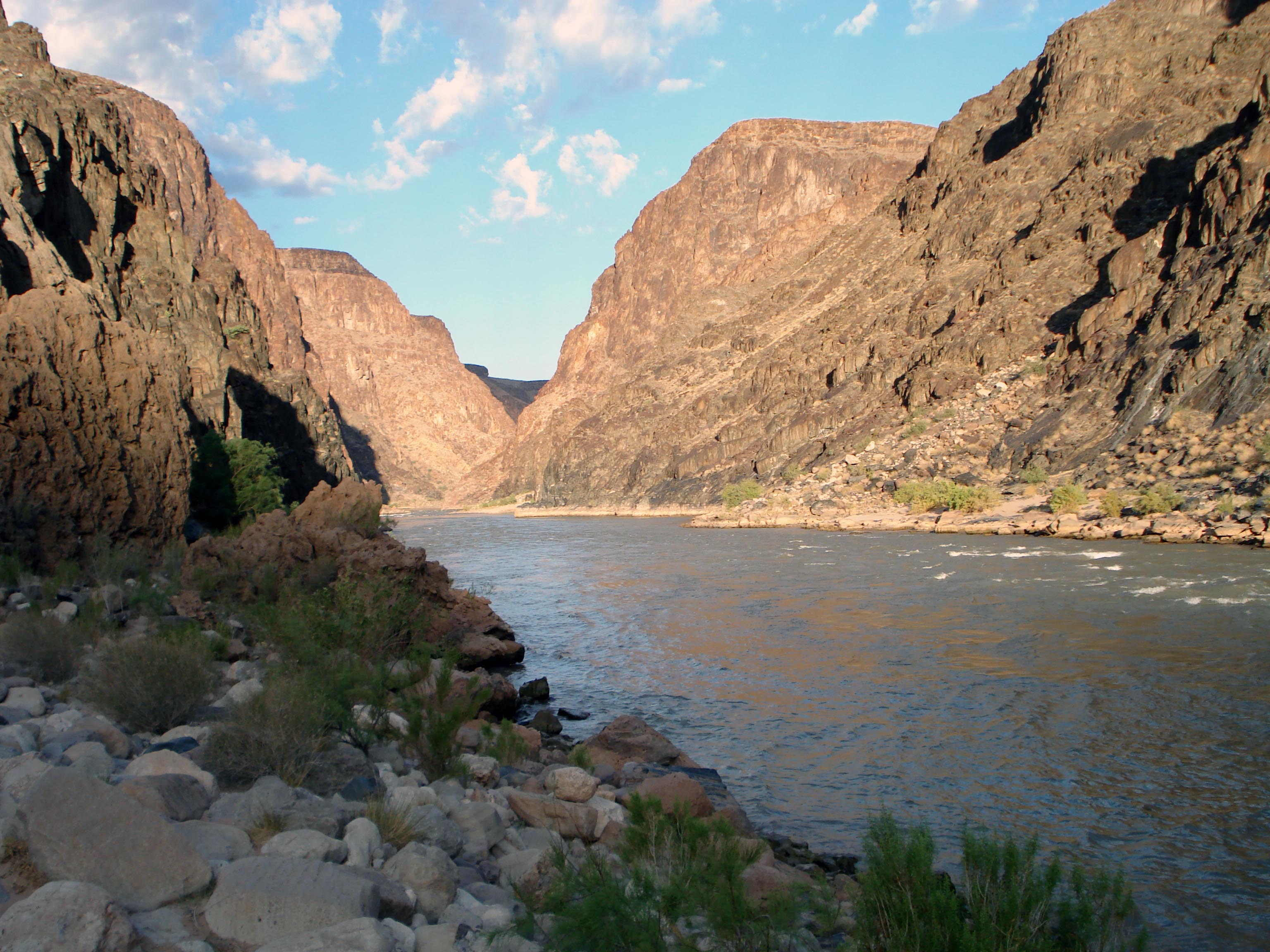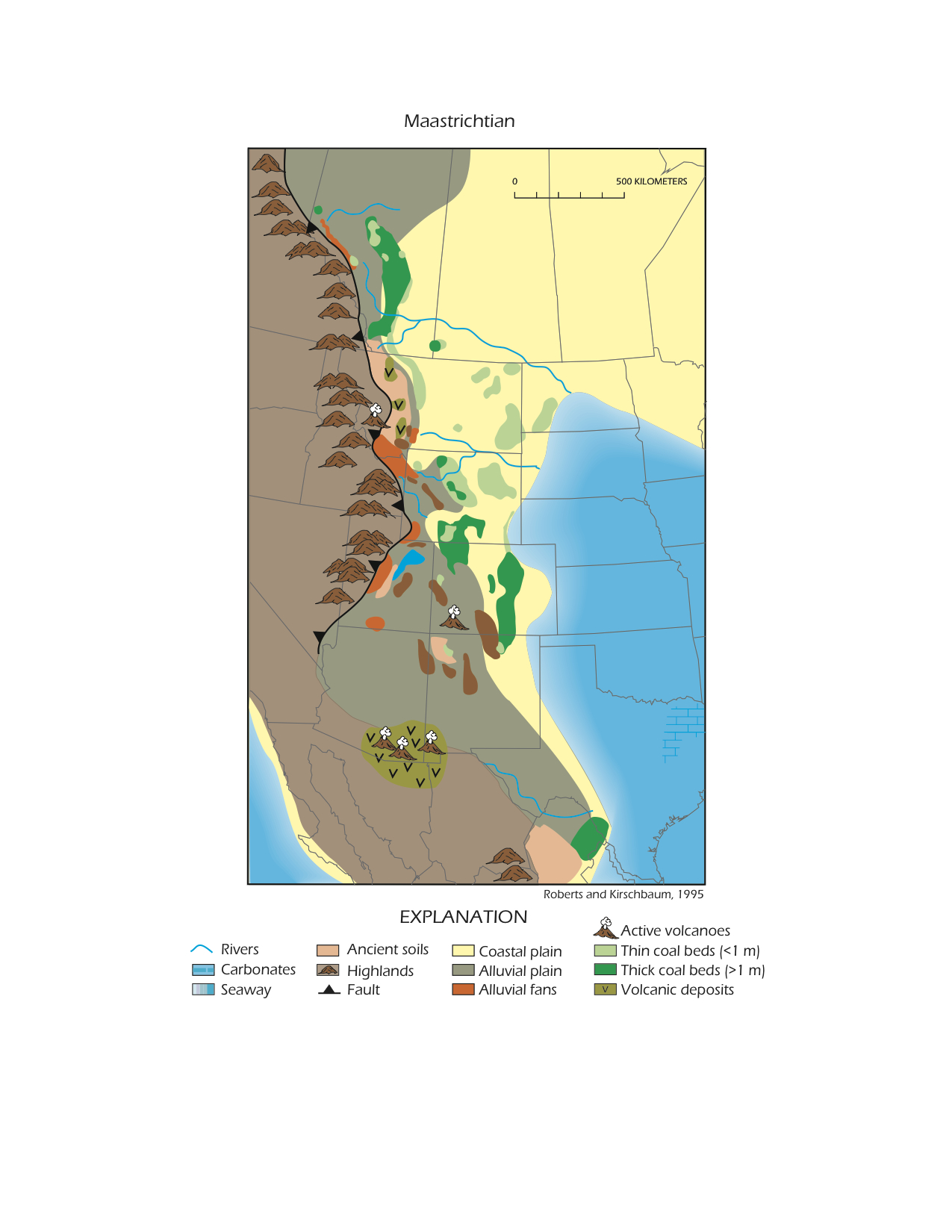New Clues Emerge in Puzzle of Grand Canyon's Age


The age of the Grand Canyon is a puzzle, because the Colorado River has washed away many of the clues.
So for 150 years, geologists have pondered the processes shaping the canyon, one of the world's great wonders and a living laboratory for understanding Earth history.
The gorge's rugged beauty, with its sheer cliff and steep slopes, looks young. And the general scientific consensus, updated at a 2010 conference, holds that the copper-colored Colorado River carved the Grand Canyon beginning 5 million to 6 million years ago. Many strong lines of evidence support this theory, including a pile of gravel and limestone pancaked with lava at a place called Muddy Creek. This geologic layer cake, at the western mouth of the canyon, locks down the Colorado River from exiting the canyon before 6 million years ago.
However, recent advances in dating techniques have upended the notion of a uniformly young Grand Canyon. The new approach determines when erosion uncovered rocks in the canyon. The big picture: there were two ancestral canyons, one in the west and one in the east. And the western canyon may be as old as 70 million years.
Grand Canyon's ancestors
The latest sally is a study reporting samples from the western Grand Canyon were close to the Earth's surface 70 million years ago. The evidence suggests the western Grand Canyon was cut to within 70 percent of its current depth of 3,280 feet (1,000 meters) long before the Colorado River existed. The results appear today (Nov. 29) in the journal Science.
"Our data suggests that there was in fact a large canyon present for most of the Grand Canyon by about 70 million years ago in its western segment, and that canyon was carved to nearly modern depths," said Rebecca Flowers, lead study author and a geology professor at the University of Colorado, Boulder. "In the eastern canyon, the canyon was higher, and lowered into its modern configuration sometime after 20 million years ago."
Get the world’s most fascinating discoveries delivered straight to your inbox.
This much older western "paleocanyon" was incised by an ancient river flowing west to east. This Cretaceous river carved the western Grand Canyon to within a few hundred meters of its modern depth, and the eastern Grand Canyon to a higher level.
When combined with rock sample ages Flowers collected in the eastern Grand Canyon during this study and in 2008, the overview gives the Grand Canyon a complicated history. However, the research can fit into the constraints presented by the Muddy Creek barrier and other evidence supporting a young canyon, Flowers told OurAmazingPlanet.
"The presence of the [Muddy Creek] detritus represents the integration of the river system," Flowers said. That is, the Muddy Creek simply represents the Colorado River appropriating the paleocanyons and created a single drainage 6 million years ago.
Two canyons?
Geologist Richard Young, who has studied the Grand Canyon for nearly 50 years, said scientists have considered the idea of two Grand Canyon precursors — one west, one east — since the research community's first symposium in 1964.
"We agreed that there were two canyons, one in the west and in the east, we don't disagree on that," he said. The problem is that Dr. Flowers wants to make the western canyon very old, Young told OurAmazingPlanet. [Related: Grand Canyon in Pictures]
"It really looks like they're onto something, but it's hard to make sense out of it," said Young, a professor at the State University of New York in Geneseo. "It's really good work and it's really interesting, so obviously there's something we're missing in the story. I'm sure we're going to be talking about it forever," he said.
Recent work by geologist Karl Karlstrom supports the idea for a paleocanyon in the east. "We showed very conclusively that there was a paleocanyon in the eastern Grand Canyon that was carved between 25 and 15 million years ago," said Karlstrom, a professor at the University of New Mexico in Albuquerque.
But Karlstrom is a strong advocate for a Grand Canyon quickly carved by the Colorado River starting 6 million years ago, not older rivers coming from the west. The western Grand Canyon region was cut across nearly at right angles by one or more paleocanyons with rivers that flowed north around 70 million years ago, but these paleorivers did not follow the modern course of Grand Canyon, Karlstrom said.
"The best answer is that Grand Canyon was carved by the west-flowing Colorado River in the last 5 to 6 million years and that earlier paleocanyons were likely re-used and deepened once the river found its present path," he said.
Southwest during the end of the dinosaurs
The American Southwest had a radically different appearance 70 million years ago. Most of the region's famed dinosaur fossils come from the Jurassic, and the canyon-cutting identified by Flowers and colleague Ken Farley of Caltech began in the Late Cretaceous.
Seen from the air, the flat Colorado plateau might be recognizable, but the rainbow-hued pillars and monuments of national parks such as Arches, Zion and Bryce had yet to take shape. Close to the west rose a volcanic arc similar to today's Andes — the precursor to California's Sierra Nevada Mountains. A wrinkled belt called the Sevier mountains was northwest of the plateau. To the east was the Western Interior Seaway. Rivers flowed out of mountains generally heading northeast into the ocean.
The infant Rocky Mountains didn't start their rise in the east until about 10 million years later, though this timing is debated. The Basin and Range province, which built the classic Southwest monuments and valleys immortalized in film and art, began tearing apart 20 million years ago. Rivers crossing the Colorado Plateau reversed their course, flowing east to west, around this time.
"We know the river systems must have evolved dramatically during this time. The controversial part of it is how they evolved," Flowers said.
Reach Becky Oskin at boskin@techmedianetwork.com. Follow her on Twitter @beckyoskin. Follow OurAmazingPlanet on Twitter @OAPlanet. We're also on Facebook and Google+.





